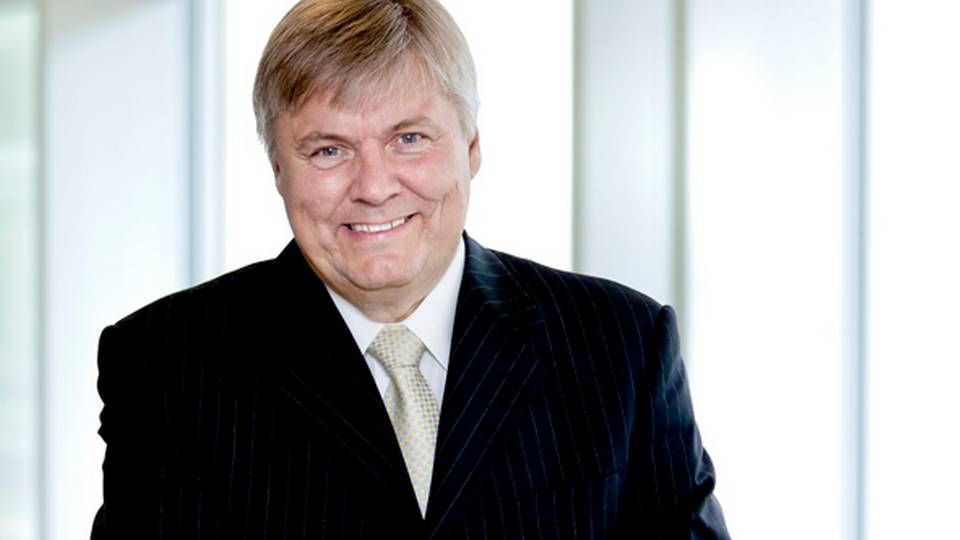DNV GL losing tonnage following merger

OSLO
Almost one year after the merger between German Germanischer Lloyd and Norwegian DNV, a move that created the world's largest classification company in DNV GL, CEO Henrik Madsen takes stock of the process of integrating the two companies. There are good news as well as bad news.
According to Henrik Madsen the merger means that the companies are saving "tens of millions of dollars" through efficiencies related to costs. He points to a joint IT platform, a new set of rules, and that all ships will, in time, be placed under DNV's production system, which means that there will be only one system. And there are similar synergy effects in several places throughout the organizations after the merger was approved in September last year by all four competition authorities in China, South Korea, EU and the US, respectively.
But there DNV GL is primarily experiencing these forms of efficiencies in terms of costs.
"We're also losing profits because equipment suppliers no longer need to have two type certificates, because now they only need one. So we don't expect any particular synergies in terms of profits. We're losing quite a bit of tonnage, which is also due to the fact that some of our competitors in the current market are offering very low prices. For a carrier in dire straits, it's tempting to go for this," he says."
So there are classification companies that, according to Henrik Madsen, make offers far below prices that reflect the companies' costs:
"I mind if some players are going out there offering carriers that 'if you build to our classification we'll give you three years of operations for free.' If you offer something for free you're implicitly saying that it doesn't have any value, and this is completely devastating for the classification concept. What are we selling? To a large degree, what we're selling is trust."
However, the declining amount of tonnage does not faze Henrik O. Madsen, and DNV GL is still ranked high in terms of newbuildings, with 24 percent of all newbuildings this year, and that is a solid figure, he says.
New rules
Before the merger was approved the two classification companies had approximately nine months to define the organization, make plans and identify around 900 top-level executives. A process where everyone could apply and which ended with 1/3 of the executives coming from GL and 2/3 from DNV, which reasonably reflects the size of the companies before the merger, says Henrik O. Madsen. Following this, the strategy for 2014/2015 was approved:
"We need to complete this integration successfully, and we need to - since we're a leader in virtually all fields - take a bigger social responsibility in all these fields," he says, adding that DNV GL will use five percent of its revenue for research and development.
And there are more practical matters that need to be settled. Like getting everyone onto the same IT system, while the work to create a common set of rules is in full swing. All existing ships will continue on current DNV or GL classifications until they are scrapped, says Henrik Madsen:
"But by the end of year we'll have a new set of rules ready, which will then be subject to a six-month industry hearing, and from January 2016 the new set of rules will apply to new designs. We want to make sure these rules are the best in the world."
Year 1 brought DNV GL a revenue of USD 2.54 billion
He explains that DNV GL, in its efforts to harmonize the rules, has followed up on the work of the international association of classification companies (IACS), where the scrapping rules for tanker and bulk have been harmonized. DNV GL is now applying this to all ship types.
"We're using an opportunity to improve the rules, so that they become state-of-the-art. It took eight years to modernize bulk and tanker in IACS, so it takes a an enormous amount of time in the big group. Now we're doing it in one year."
New markets
As mentioned above, Henrik O. Madsen is not worried about the declining volume of tonnage, which is one result of the merger, because the merger has also opened the door to markets where DNV has perhaps not been so strong in the past.
"We've secured quite a bit of work in offshore verifications and marine operations, and we've gotten bigger total packages than in the past. There are many offshore mega-projects in oil and gas, where we're now landing bigger contracts with massive scope," he says, adding that these can include classification, but also verification, technology qualification, and environmental and risk analyses.
"We're in a stronger position here than before, due to a broader skill-set."
Major DNV and Germanisher merger receives final approval
The so-called mega-projects are defined as such due to the fact that they bring DNV GL profits in the range of USD 9-18 million, and they are located across the globe, anywhere from Australia to Brazil and the Middle East.
LNG has tipped
Henrik O. Madsen and DNV GL has been one of the major advocates for the development of LNG, and confidence in the environmental fuel remains strong.
"I think we've reached the tipping point," he says.
For instance, DNV GL has developed the concept LNG-ready, and this concept keeps gaining in popularity:
"There are so many out there looking to prepare their ships for LNG, but they hold off on installing the fuel tank, which is the biggest cost. And the infrastructure is sure to come quickly. I'm not worried about that," he says, referring to the discussions about the continuing lack of infrastructure, including within the EU in terms of bunker stations in the ports.
The coming SECA requirements for reduced sulphur emissions in Northern Europe from January 2015 will also help boost the development, says Henrik O. Madsen.
UASC also believes in LNG
Arabian container carrier UASC, headed by Danish Jørn Hinge, has opted to order all its ultra-large container ship newbuildings with engines that operate on conventional bunker oil as well as LNG.
"We have not just chosen LNG in order to sail in ECA zones, because that only represents 6 percent of our market. We've originally stated that we believe in LNG shipping five years from when our last newbuilding is delivered. Now I think it's going to happen faster, that is, in a few years. As soon as the infrastructure is in place it's going to happen," Jørn Hinge tells ShippingWatch.
UASC is currently the 10th largest container carrier in the world, and following the new 2M agreement between Maersk Line and MSC, analysts predict that UASC will target collaborative agreements with CMA CGM and CSCL.
DNV GL has around 16,000 employees spread across 300 stations worldwide. DNV GL classifies more than 13,000 ships and mobile offshore units, representing 23 percent of the global operated tonnage.
Det Norske Veritas sells DNVPS to investment fund
Related articles
Det Norske Veritas sells DNVPS to investment fund
For subscribers
DNV secures approval from US Coast Guard
For subscribers
DNV sees strong growth in revenues
For subscribers





















